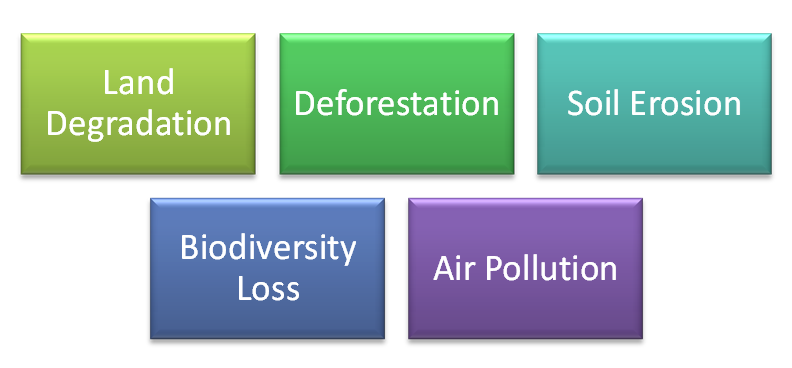STATE OF INDIA'S ENVIRONMENT
- The black soil of the Deccan Plateau is particularly suitable for the cultivation of cotton, leading to a concentration of textile industries in this region.
- The Indo-Gangetic plains spread from the Arabian Sea to the Bay of Bengal are one of the most fertile, intensively cultivated and densely populated regions in the world.
- India's forests, though unevenly distributed, provide green cover for a majority of its population and natural cover for its wildlife.
- Large deposits of iron ore, coal and natural gas are found in the country. India alone accounts for nearly 20% of the world's total iron-ore reserves.
- Bauxite, copper, chromate, diamonds, gold, lead, lignite, manganese, zinc, uranium, etc. are also available in different parts of the country.
India's environmental problems pose a “Dichotomy" (contrast between two things that are or are represented as being entirely different):
- Poverty is causing environmental degradation through cutting down of trees (to use fuelwood), overgrazing of animals, pollution of water resources, and encroachment into forest land.
- Affluence in living standards is causing environmental degradation because with affluence (wealth), the demand for goods and services increases. Higher demand necessitates the need for an increase in production. For increasing production, the demand for finite natural resources increases. It raises the pollution resulting from more vehicles and industries.
CHALLENGES TO INDIA'S ENVIRONMENT
Air pollution, water contamination, soil erosion, deforestation and wildlife extinction are some of the most pressing environmental concerns of India. The priority issues identified are:


 PathSet Publications
PathSet Publications
